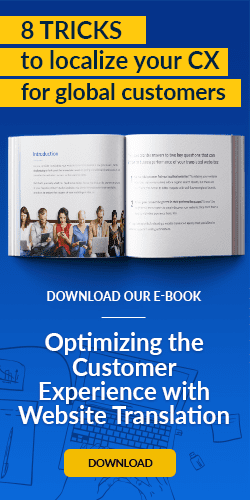Western brands are maestros at marketing to their primary-market audiences. They’re fluent in the language (which is often English), they understand the culture like a native (because they’re often natives themselves), and are savvy to consumer behaviors (because they’re local shoppers, too). Native marketers take this nuanced market knowledge for granted.
However, one size doesn’t fit all when marketers must promote their brands in global markets. Here are a few stories of costly marketing missteps:
- Walmart bailed on Germany in 2006 after eight years in the market, at the cost of around $1 billion. (The company’s ethos of high-volume sales and low prices didn’t jibe with German culture.)
- PC manufacturer Acer ate crow when its “Simply My Life” campaign fell flat in China. (Acer’s price-conscious brand messaging convinced Chinese consumers the PCs were unreliable.)
- The Home Depot took it on the chin for about $160 million when it closed shop in China. (Chinese consumers associate do-it-yourself home improvement projects with poverty, not an enjoyable hobby.)
An attention to detail, and a commitment to cultural fluency, makes all the difference between sinking and swimming in new international markets.
Through a savvy combination of technology, translation and proprietary data, we’ve helped companies make powerful connections with online customers in new domestic and global markets. Our exclusive, market-specific insights into online consumer behaviors have also informed advice to our clients, and how to best reach these new customers.
The Power of On-Site Content Optimizations
Take a recommendation we made to a U.S.-based telecom company a few years ago. The company’s Spanish-language website was doing a fine job of serving the Spanish-speaking U.S. Hispanic market. However, based on our observations of an underperforming section of the Spanish site’s home page, we believed a unique campaign would benefit both Hispanic customers and our client. By translating a special Account Management section of the site, and actively promoting it on the home page, we empowered Spanish speakers to view and pay their bills, add phone lines and upgrade their accounts—all in their preferred language.
The results were immediate and sustained. Based on our A/B test, account activity grew by 12% and conversions increased by nearly 20%.
Last year, we worked with another telecom client to boost conversions on its Spanish-language site (also serving U.S. Hispanics). We suggested the company deploy a promotional banner, highlighting international calling plans. That promotional page’s visits grew by 850%. Revenue and average order value rose 117% and 43%, respectively.
This approach helped another MotionPoint client overcome a credibility gap. A UK-based fashion retailer entered the U.S. global market, but American consumers had never heard of the company—and weren’t buying from the site. MotionPoint displayed localized banners for customers, touting the retailer’s world-renowned credibility. In less than a week, checkout rates rose by nearly 30%.
Indeed, armed with this powerful combination of market-specific content, A/B testing, conversion funnel changes, and more, our e-commerce clients have seen a 52% average increase in conversion rates.
More Global Marketing Best Practices
We’ve clearly illustrated the value of cultural fluency, and how it benefits global marketing initiatives. To learn more on the topic, we spoke to Logan Lenz, a Global Online Strategist with our Global Growth team.
“We have a lot of visibility into digital and on-site localized marketing,” Logan explains. “Generally speaking, online marketers should pay close attention to what their website analytics are telling them. Most recommendations can be made based on an untapped opportunity that data is suggesting.”
For instance, geographical information passed through analytics is an extremely valuable indicator. It hints that your brand is garnering popularity in an underserved market, Logan explains. Understanding why these users are visiting your site and enhancing their specific user experience is a great first step to engaging them.
“Even if the company doesn’t have a website in these consumers’ language yet, the best will personalize these shopping experiences by layering a ‘welcome mat’ that informs them of this,” Logan says. “This tactic spans both language and region. If you can detect the user’s persona, you can customize a heightened experience catered specifically to them.”
While many marketers insist that “Content is King,” MotionPoint takes a different approach, Logan says. For us, context is king—especially when engaging global markets.
The most important thing a brand can do is accommodate users by relevancy, Logan says. In new markets, this requires a watchful eye, managing both a content and promotions calendar. These calendar of items should align with community events such as locally-celebrated holidays.
“Potential customers begin to trust a brand when it cares enough to acknowledge what’s important to them, and their culture,” Logan says. “On top of that, simply joining in on local celebrations makes for a fun and press-worthy strategy in and of itself.”
From Personalization to Optimization
Brands that have considered how best to personalize experiences for global customers based on language and region, can graduate to the task of optimizing the on-site shopping experience for these newcomers.
“Once again, it’s is all about relevancy,” Logan says. “For example, payment methods differ across markets. It pays to display and accept the correct forms of payments in markets that prefer those that fall outside the norm. Not only will conversion rates increase because it’s a more often used method, but it also builds enough trust to inspire customers to come back again in the future.”
At the end of the day, a company’s marketing to online global audiences should be viewed as a natural extension of the brand—from ethos, commitment to customer satisfaction, and other nuances such as brand voice and mission.
“Ultimately, no matter where you are in the world, marketing is marketing,” Logan says. “A story is a story. Emotions are emotions. Shout loudly and deploy the same tactics that work at home. Just be sure you’re making the necessary customizations by market to resonate best with your new customers.”
Last updated on April 21, 2016


